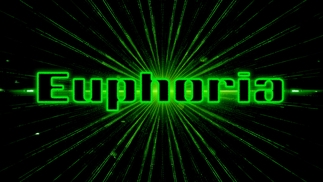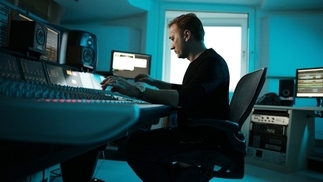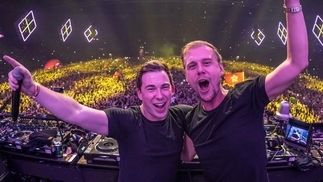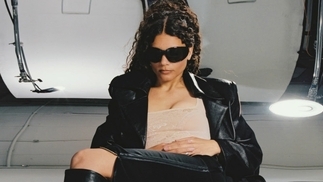FERRY CORSTEN'S UNIVERSAL BLUEPRINT: DJ MAG USA COVER STORY
The Dutchman delivers his most ambitious album yet...
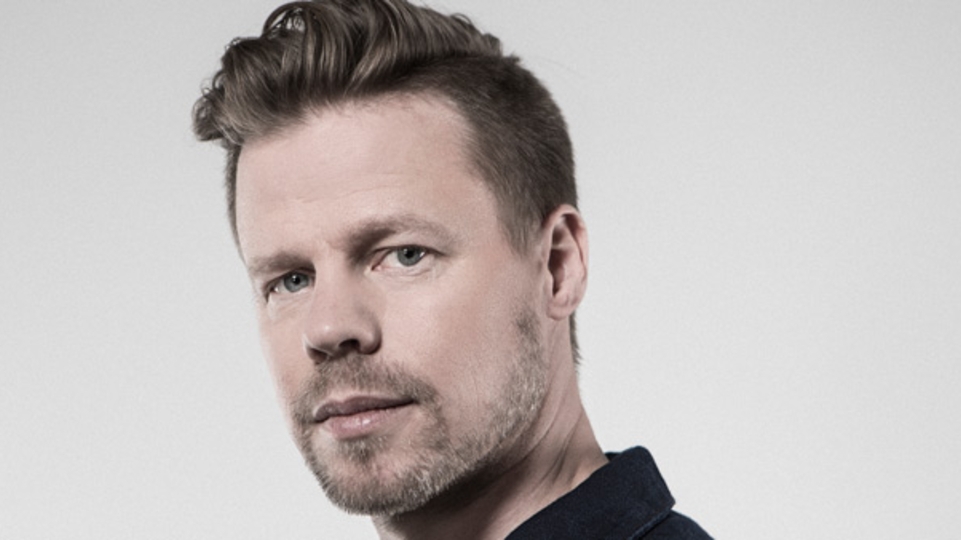
Ferry Corsten returns to his uplifting trance roots with an immersive multimedia project that explores fundamental questions about humanity and the galaxy we inhabit, taking us on an emotional journey of epic proportions.
Words: ERIN SHARONI Pics: JOS KOTTMAN
----------
“It begins with a sound. Echoing, from the depths of space.
Endlessly repeating. We couldn’t help but listen.
Scientists, academics, politicians and pundits, practically everyone on Earth with an idea and the internet –
none of them could explain the sound.
Is it the pulse of a dying star? A rogue satellite? Or perhaps, an interstellar SOS?
This isn’t the first time. But this signal may be the last.
Every country in every corner of the world has a different name for the sound.
But most of them translate to, simply: The Drum.”
Ferry Corsten is seated on a plush white recliner, in an airy, sun-drenched room in Miami’s Delano hotel. He leans toward his laptop and hits pause, looking up with a grin. “That’s the album trailer,” he declares. Like a movie preview for a summer blockbuster, the song he has just played culminates in an epic crescendo, replete with a narrator’s rich, deep voice speaking over the build. It ends abruptly.
DJ Mag sits across from Ferry, perched on the edge of our chair. “We want more!” we exclaim. “What is ‘The Drum’? What does it mean? Is it an alien language? A code?” Ferry chuckles and nods, confirming that this reaction is precisely the one he’d hoped to elicit.
The Dutch wizard of trance is in town for Miami Music Week, scheduled to take the stage at Ultra Music Festival in 24 hours, where he will perform under his legendary Gouryella project alias. Today is Saturday, and it’s his off-day – a day he planned to avoid meeting obligations and work diligently from the comfort of this hotel on completing his ambitious multimedia concept album, ‘Blueprint’.
But, as Miami goes, no plans stay planned for long. This time, we’ve foiled them. We watch Ferry expectantly, waiting for him to reveal another piece of the album.
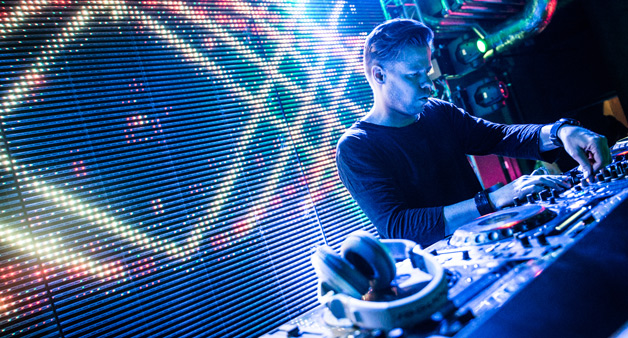
He scrolls through various project files on his computer with a furrowed brow and runs a hand through his blonde hair. “There’s a new Gouryella song on the album, too,” he assures us. “You heard a little clip yesterday, but let me find it so you can hear the whole thing.”
A housekeeper knocks on the door as she pushes it open and peeks into the room. “Ah, we’re having an interview here, sorry. Please just give us a few minutes,” Ferry calls out. Yet another plan to come undone – our conversation lasts for two hours.
0 1 1: A SPACE ODYSSEY
In Ferry Corsten’s world, trance is a family business. His father handles all of the administration for Ferry’s record label, Flashover Recordings. The elder Corsten hears the music promos that filter through both inboxes. “At one point my dad said to me, ‘My goodness Ferry, where is this music going? What happened to the beautiful stuff?’” Ferry recalls with a wry smile.
In response, Ferry released ‘Anahera’ as Gouryella in 2015 – after a 13-year hiatus from the alias – marking a return to the epic euphoria and uplifting harmonics that have always defined the moniker. The record soared to the top of the charts, becoming the longest-running #1 trance track in Beatport history and filling mainstream airwaves with a sound that had largely been washed away with the rise of cut-and-paste EDM. Fellow Dutch tastemaker Armin Van Buuren named ‘Anahera’ his Tune of the Year on A State of Trance.
Ferry smiles as he recounts his father’s reaction: “When my dad first saw the music video for ‘Anahera’, he said to me, ‘Ferry, this is what you should be doing! There’s depth in it, there’s a story. That’s just not being done anymore.”
Then his father reminded him of something they used to listen to together: Jeff Wayne’s musical version of 'The War Of The Worlds’. A best-selling concept album released in 1978, it retells the classic sci-fi story written by H.G. Wells at the turn of the century. In the vein of The Who’s rock opera Tommy, Wayne’s rendition of The War Of The Worlds is a progressive-rock-meets-psychedelic-string-orchestra creation, strung together with spoken word narrative from renowned actor Richard Burton.
“As a kid, I grew up looking at the vinyls with all the artwork and paintings of these aliens and stuff,” Ferry smiles, “I was fascinated by it!” When Ferry’s father reminded him of the old album, a lightbulb went off: “You just said the magic words, I told him. You just gave me an idea.”
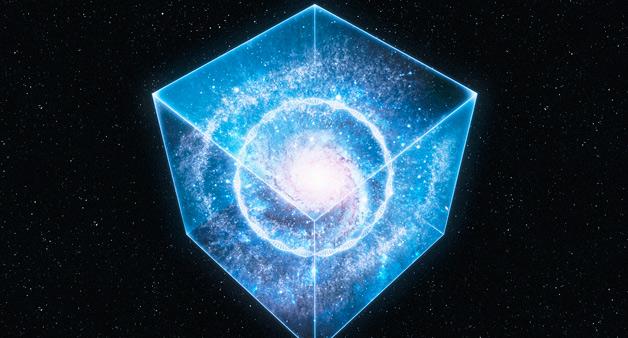
‘Blueprint’ revives the rock opera tradition of Ferry’s youth, with trance synth pads replacing electric guitar riffs. It is a multimedia project that tells a musical story, replete with illustrations by visual artist Oska and a script penned by Hollywood screenwriter David Harrington Miller (House Of Cards), narrated by the smooth baritone voice of actor Campbell Scott (The Amazing Spiderman).
Ferry wanted it to be a love story with a sci-fi twist. “Sci-fi always adds this element of the unknown,” he explains. “It’s like the mystery of life: Why are we here? Who are we? Where do our creative ideas come from?”
Those questions have swirled around Ferry Corsten’s mind and throughout his music for as long as he can remember. In ‘Blueprint’, he explores these existential themes through a science fiction lens, using the album’s storyline and its expansive, soaring melodies – “I knew I wanted to go ‘trancey’ again” – as tools to convey his ideas.
Suddenly, the narrated trailer he played for us earlier makes sense. ‘The Drum’ symbolizes the sound that has unified people since the dawn of humanity: banging out rhythm while gathered around a fire has always transcended language or cultural barriers. It’s primitive.
“Exactly!” Ferry exclaims. “That theme comes through in the narrative. The story is basically this: the world receives a code, a sound, from outer space and no one can decipher it. They call it ‘The Drum’. But there’s this loner kid out there, Lucas, who is nerdy enough to figure it out, and he discovers that it’s a building blueprint. Lucas starts building it and realizes that it’s actually a female robot. Her name is Vee. She wants to know more about his world but he is terrified of letting her go because he doesn't want the world to find out about her. She disappears, and he finds her broken into pieces. At the end, when Lucas is finally understanding it all, we wonder, who are the creators and who are the created?”
Ferry leans forward with a smile, pausing for effect, “And the last line is: ‘Have we met our makers?’”
2 3 5: UNIVERSAL TRUTHS
“Beauty is nature and nature is beauty.
We are engineers but who engineered us?”
Philosophical phrases flit across the screen during the music video for ‘Anahera’, along with the Fibonacci number sequence and visual representations of nature’s mathematical beauty: nautilus shells, sunflowers, our own spiral galaxy. “‘So, we are engineers but who engineered us?’ There’s your answer to some very controversial topics, right?” Ferry asks, folding his hands and leaning back in his chair with a raised eyebrow. “I mean, wars are being fought over this question. But ultimately, no one has the answer.”
Or maybe, we counter, everyone has the answer; maybe we’re our own creators. Ferry laughs and nods, “Yes, or maybe that.” It’s the very question that pulses throughout his ‘Blueprint’ album.
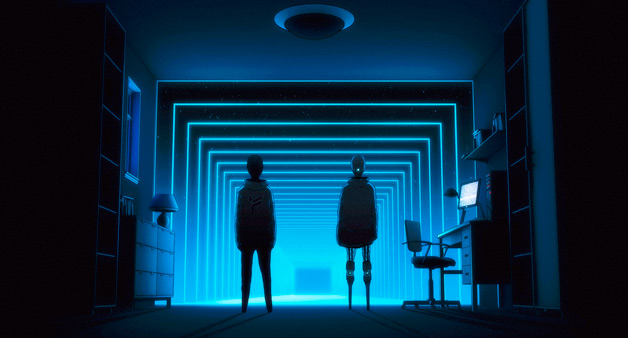
Defining the line between the creator and the created is an ancient pursuit that often ends in bloodshed where politics are concerned, as Ferry suggests. But observing the divine patterns in nature has inspired artists throughout history, often fundamentally changing the way humanity creates and experiences art, architecture, music and science. Ferry is particularly interested in these patterns, like the Fibonacci sequence (0, 1, 1, 2, 3, 5, 8, 13...) and its derivative Golden Proportion of 1 to 1.618 (Phi) that can be found across the planet, within our bodies, and in music.
No, Ferry is not stuck in a Dan Brown thriller novel. He’s just a curious person who uses his brain to contemplate the universe as much as to make music. “People question the whole Fibonacci thing,” he says, choosing his words carefully, “but I really do believe in it. It’s found throughout everything in nature. Am I a religious guy? No. But I do have my own ideas about the world, and about what’s out there.”
Ferry Corsten believes that of all the genres of dance music, it is trance that makes people think most about these existential themes. Not because it is the genre he lives and breathes, but because of its dynamic complexity.
“It’s because of all the emotions the music carries, and the shifts within it. One moment you’re ecstatic, the next moment you’re in tears and you feel like your heart is being ripped out,” he muses. “This is purely my opinion about trance. I feel like there is so much information in it, in the melodies. And frequencies can affect you so much. They’re important.”
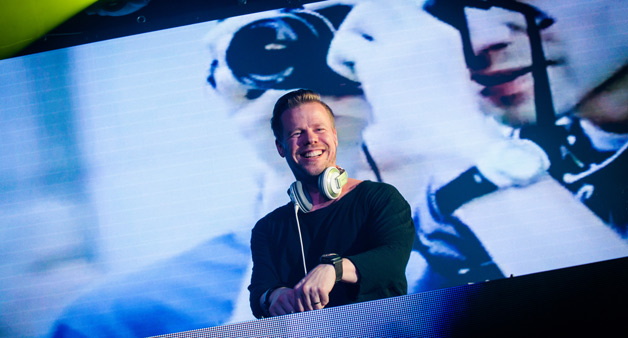
The Earth has a heartbeat of 432 Hz, Ferry explains. Roughly speaking, it is the frequency of the planet’s electromagnetic field, known as the Schumann Resonance. And while there is a good deal of controversy over how – or if – this resonant frequency affects the planet’s living organisms, people like Dutch journalist Richard Huisken suggest that in ancient times, musical instruments were tuned to this “earth frequency” of 432 Hz.
Giuseppe Verdi, the great 19th century Italian composer, was a staunch advocate of tuning the A note to 432 Hz, citing it as the most scientifically accurate choice. But Verdi’s ‘A’ was abandoned over a century ago.
“Modern music is now tuned to 440 Hz,” Ferry laments. He’s been experimenting with producing tracks tuned to 432 Hz, but because no other music uses this tuning, the tracks sound off-key. Especially in a DJ set. Still, he remains convinced that the vibratory frequencies – including the melody and harmonics of a song – that our bodies are exposed to, affect us on a deep level.
Ferry cites the example of how water reacts to sound when viewed under a microscope: “When the water is exposed to a sound tuned to 440 Hz, it becomes very spiky and uneven,” he explains, drawing erratic lines through the air with his fingers, “but when you bring it back to 432 Hz, the water becomes calm and perfectly patterned. What does that do to your body? We’re made of water. Think about it.”
8 13 21: A RETURN TO TRANCE
“Wherever you are, I hope you read the words I’ve written in the stars.”
Outside, the bright Miami sky gives way to thick, gray thunderclouds. Heavy rain pelts the hotel room window, muffling the sounds of a raucous pool party a few floors below us. “Good thing I’m not playing Ultra until tomorrow,” Ferry remarks with a laugh. The window glass glitters with droplets of water in the muted daylight and it reminds us of the way the music playing from his laptop makes us feel.
‘Wherever You Are’ is one of the soaring, epic trance tracks on ‘Blueprint’ that takes us back to the classic, early ‘00s emotion that defined an entire era of the genre. Featuring the vocals of HALIENE, the song appears in the final quarter of the album, when a heartbroken Lucas is desperately searching for his vanished Vee. “Wherever you are, I hope you read the words I’ve written in the stars,” the lyrics plead, as lush chords build and burst into a sparkling, rolling beat. It’s as euphoric as it is heart-wrenching.
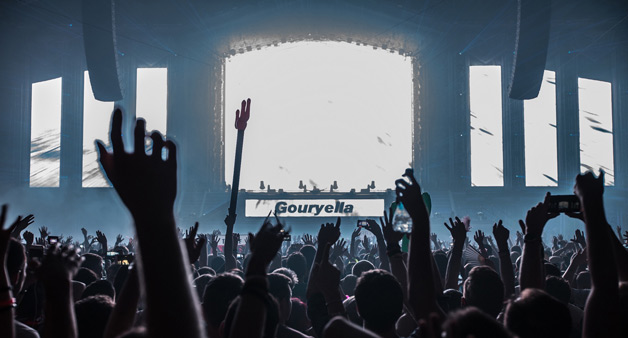
Ferry Corsten has produced under more than 30 aliases over the course of his career, from Gouryella to System F, Moonman, Dance Therapy, The Tellurians, and his inaugural moniker in 1991, The Spirit Of Adventure. But now, 26 years after his first official release, it appears he has comfortably settled into his given name by returning to the stories and sounds that have inspired him since childhood.
He cues up another track on his computer, clicking through the waveform to give us a taste of the arrangement. “This one’s called ‘Trust’,” he smiles, as we lean in to listen. The track slowly unfolds with a rising arpeggio, building into a swirling vortex of layered synths and liquid fx that suddenly fling us forward like a slingshot and off we go, shooting through the galaxy at warp speed with stars whizzing by. If there’s a song that accurately replicates an intergalactic journey on the Starship Enterprise, this is it.
“That’s exactly what I was feeling when I wrote it!” Ferry confirms.
The album’s parting song, ‘Eternity’, provides what Ferry says is perfect vibe to end the ‘Blueprint’ saga with. It is a stirring, instrumental arrangement of sparkling pads, quivering strings and majestic chords that swell in perfect harmony. Expanding like an infinite breath, the music propels us to the edge of the cosmos; cocooned in swaths of shimmering star stuff, we float amid the building blocks of a universe. It is a sentimental epilogue that cracks our heart wide open with the warm, familiar feeling that has made Ferry Corsten’s music magical from the very beginning – from Moonman’s ‘Galaxia’ to System F’s ‘Out Of The Blue’.
How does an artist manage to consistently produce the kind of music that moves people on such a deep emotional level? The vast library of Ferry’s work has been played for weddings and births; fans say that his music has helped them through chemotherapy treatments and to cope with the pain of trauma and loss.
Ferry shakes his head modestly. Inspiration doesn’t always come easily, even for an artist with a seemingly endless well of creativity. In a documentary about Ferry’s revered Gouryella alias, Markus Schulz, a trance heavyweight in his own right and longtime friend and collaborator of Ferry’s, insists that Ferry Corsten has an uncanny ability to bring music to life by hearing the songs already fully formed in his mind.
Ferry chuckles and nods when we repeat the quote. “Yes, that happens sometimes. But sometimes, when I get really frustrated, I tell myself: ‘Don’t worry; let the universe speak to you, it will come.’” He pauses, lost in thought. The rain outside has stopped and the room is quiet. “You know, Markus made a really cool comment once. He told me, ‘Every song is already written, you just have to grab it from out there, you just have to just step into it and make it yours.’”
On Sunday evening at Ultra Music Festival, Ferry Corsten steps onto a darkened stage. As the music slowly bubbles to life, a hushed crowd sways beneath glittering white lights. They’re here to see him perform a rare, 60-minute set as Gouryella; an emotional journey comprised of classic tracks that some of the audience will hear for the very first time, and that some already hold close to their hearts.
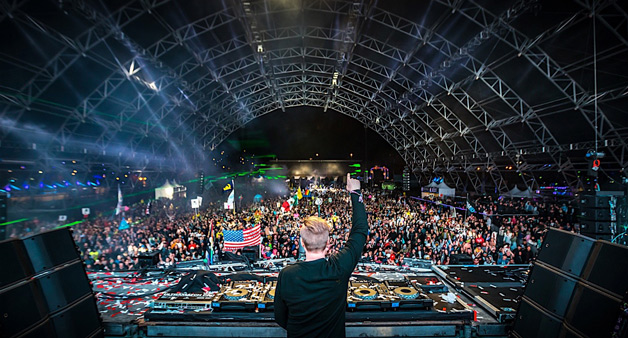
We venture into the crowd, wanting to immerse ourselves in the experience. People cheer and smile, hug each other and sing along to lyrics they recognize. Technicolor imagery flutters across giant LED screens: a luminous Grand Canyon, the rainbow-hued cosmos, flowers unfurling their petals, binary code.
When Ferry premieres his newest track, the only Gouryella anthem to appear on ‘Blueprint’, the dancefloor grows silent during its melodic build. Titled ‘Venera’, the Russian word for Venus, it is the song that defines Vee, the story’s robot heroine. Tears stream down the face of a girl standing beside us.
A sea of thousands of arms stretch upward toward the stage and among them, flags from countries across the world flutter in the breeze: Mexico, Scotland, Ecuador, America, Croatia. Goosebumps prickle our arms even in the warm, damp air. A young raver wearing neon-rimmed glasses claps his hands to his face in awe and yells, “Is this what trance is? Oh my god, it should all be like this!” He spins around and wraps us in a sweaty embrace, pulling out his phone to take a selfie with a smiling stranger as the crowd roars back to life. It’s clear that whatever blueprint our universe is built upon, music is the architect.

